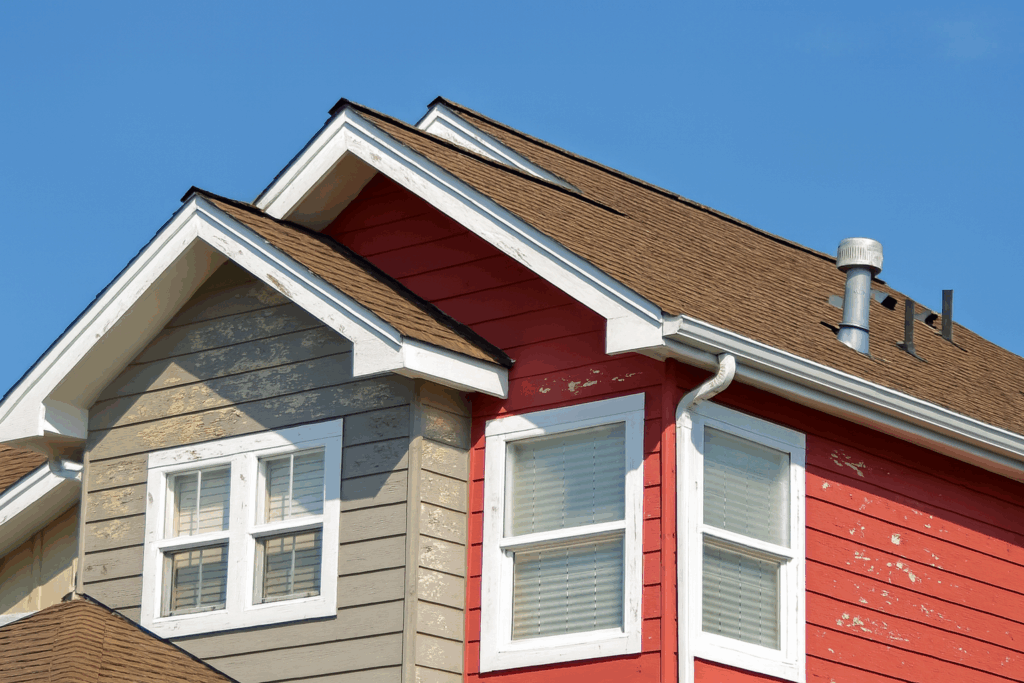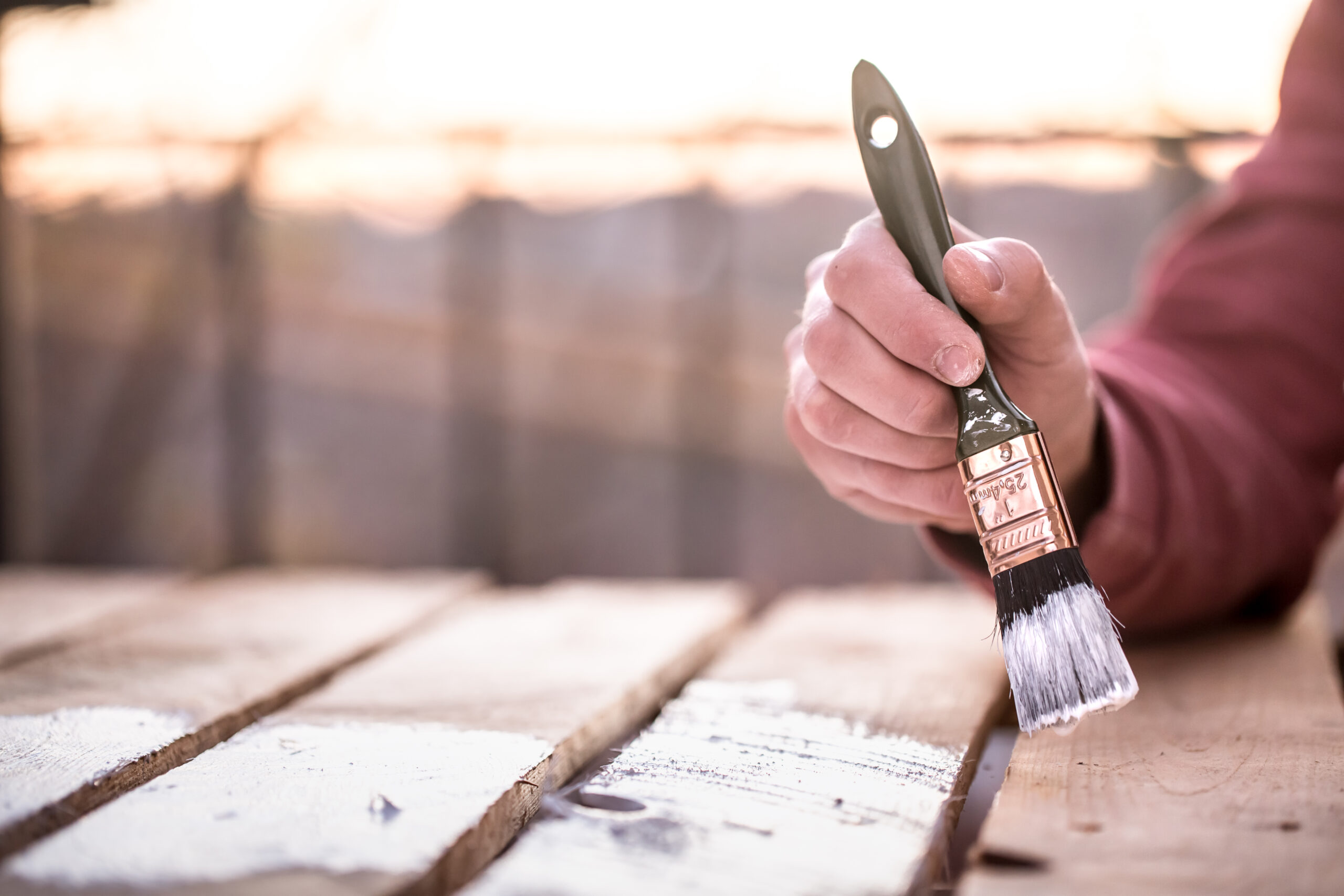Chipped or peeling paint might look small at first, but it never stays small for long. Once the surface is exposed, it keeps breaking away until you’re staring at a rough patch on your wall, trim, or siding.
If you’ve ever asked yourself how to repair chipped paint, you already know it’s not just about appearance. Chipped paint leaves surfaces vulnerable to water, dust, and even rust in some areas.
For homeowners in Hillcrest, dealing with chipped paint is a common home improvement project, especially with the area’s weather swings that add extra stress on painted surfaces. This is where professional painters in Hillcrest step in with the right tools and methods to bring walls, trim, and siding back to a smooth, fresh look.
Key Takeaways:
- Chipped paint often comes from moisture, heat, or poor prep work, and it leaves surfaces exposed to further damage.
- Professional painters in Hillcrest use tools like sandpaper, wire brushes, spackling paste, and primer for long-lasting results.
- Proper surface prep, including scraping, sanding, and cleaning, is the foundation of any successful chipped paint repair.
- Applying coats of primer before repainting prevents uneven absorption and helps repairs blend seamlessly.

Why Chipped Paint Happens in the First Place
Paint doesn’t just break off without a reason. Several everyday factors cause it to peel, flake, or chip away:
- Moisture issues: Water seeping through cracks, leaks around windows, or plumbing problems.
- Surface prep problems: Skipping primer or not sanding properly before painting.
- Low-quality paint: Using paint that isn’t suited for wood, drywall, or exterior surfaces.
- Heat and sunlight: Constant sun exposure in Hillcrest can break down latex or enamel paint over time.
- Wear and tear: High-traffic areas like bathrooms, kitchens, and hallways take a beating.
When paint chips, it often exposes wood, drywall, or other materials beneath. Left alone, that surface absorbs more water, leading to bigger problems like rot, cracks, or deeper peeling.
Tools and Materials Used by Professional Painters
When learning how to repair chipped paint, the process may sound simple, but the tools matter. Professional painters in Hillcrest come prepared with the right equipment to avoid common painting mistakes and keep repairs lasting for years.
Here are the main items used:
- Sandpaper and sanding blocks for smoothing edges
- Wire brush for stubborn paint flakes and rust
- Putty knife and scraper to remove loose paint
- Spackling paste, putty, or joint compound for filling holes
- Primer for sealing the surface
- High-quality paint (latex, enamel paint, or oil depending on the surface)
- Paintbrush, microfiber cloth, and masking tape for clean application
- Protective gear for dealing with dust and potential lead paint
This setup ensures the repaired area blends seamlessly with the rest of the wall or trim.
How to Repair Chipped Paint?
Step 1: Preparing the Damaged Area
Repairing chipped paint starts with removing the weak material. Professional painters will:
- Scrape away peeling or chipped edges with a scraper or putty knife.
- Brush down the area using a wire brush to clear dust, rust, or remaining fragments.
- Sand with fine-grit sandpaper until the edges feel smooth.
Skipping this preparation often leads to bigger issues later, like paint lifting right back up.
Step 2: Filling and Smoothing the Surface
After the surface is prepped, it’s time to restore the flat, even look:
- For wood: wood putty is applied with a putty knife to cover chips or cracks.
- For walls: spackling paste or joint compound fills dents and chipped sections of drywall.
- For house exteriors: acrylic filler or waterproofing materials may be used depending on the level of damage.
Once dry, the area is sanded again to match the surrounding surface. A microfiber cloth is often used to wipe away any lingering dust before priming.
Step 3: Applying Primer the Right Way
Primer is the unsung hero when repairing chipped paint. It seals the surface, helps paint stick evenly, and prevents future peeling. Applying coats of primer across the repaired spot also prevents uneven absorption, which is a common reason patchwork repairs stand out.
Professional painters in Hillcrest know how many coats of primer a surface truly needs. For example, exterior wood near windows may need extra attention compared to a small bathroom wall repair. If you want a uniform finish, priming correctly is not optional. More details on this are explained in coats of primer.
Step 4: Painting for a Seamless Finish
With the surface prepped and primed, the final paint goes on. Professionals carefully color match the existing wall or repaint an entire section for consistency. They use:
- Brushes and rollers for smooth application
- Spray paint methods in certain cases for large, flat areas
- Masking tape to protect trim, floors, or windows
- Enamel paint for high-moisture areas like bathrooms and kitchens
- Latex paint for flexible, interior applications
Every step is about blending the repair so the wall or trim looks brand new.
Safety Considerations With Older Homes
Many Hillcrest homes have history, which also means they may have older layers of paint. If your home was built before 1978, lead paint may be hiding under the surface. Disturbing it creates harmful dust that needs special handling. Professional painters test for lead paint and use safe removal methods. This isn’t just about looks but about health for your family.
If you’re weighing when it’s time for more than a repair, professionals can guide you using signs like the signs to repaint your house exterior.
FAQs About Chipped and Peeling Paint
How do you fix chipped paint on a wall?
The damaged area is scraped, sanded, filled with spackling paste, primed, and painted. Professional painters make sure the repair blends into the surrounding wall.
How do you fix peeling paint?
If peeling covers a wide area, painters often remove all the loose paint, sand the base, and repaint entirely. Spot repairs only work if the edges are solid.
How much to fix chipped paint on a car?
That’s a different process involving wheels, polishing, enamel coatings, and automotive spray paint. Professional auto body shops handle this type of repair.
Can I paint over chipped paint?
Yes, but the edges will show and peeling usually continues. Proper repair lasts longer and looks better.
Final Thoughts on Restoring Your Walls and Trim
Repairing chipped paint is more than just filling a small mark. It’s about protecting wood, drywall, and other surfaces from further damage. When done right, the repair blends seamlessly and prevents future peeling. Professional painters in Hillcrest bring the right tools, from sandpaper and putty knives to primer and quality paint, so the results are smooth, durable, and attractive.
Here’s how we help homeowners across Hillcrest and nearby neighborhoods:
- Careful preparation of walls, trim, and siding before painting
- Professional repair of chips, cracks, or peeling paint using spackling paste, putty, or joint compound
- Application of coats of primer for strong adhesion
- Precision painting using brushes, rollers, or spray paint as needed
- Cleanup that leaves your home ready to enjoy
If you’re dealing with chipped or peeling paint in Sorrento Valley, Spring Valley, Torrey Pines, or the surrounding areas, call us at 619-389-2118 for a FREE estimate today.


